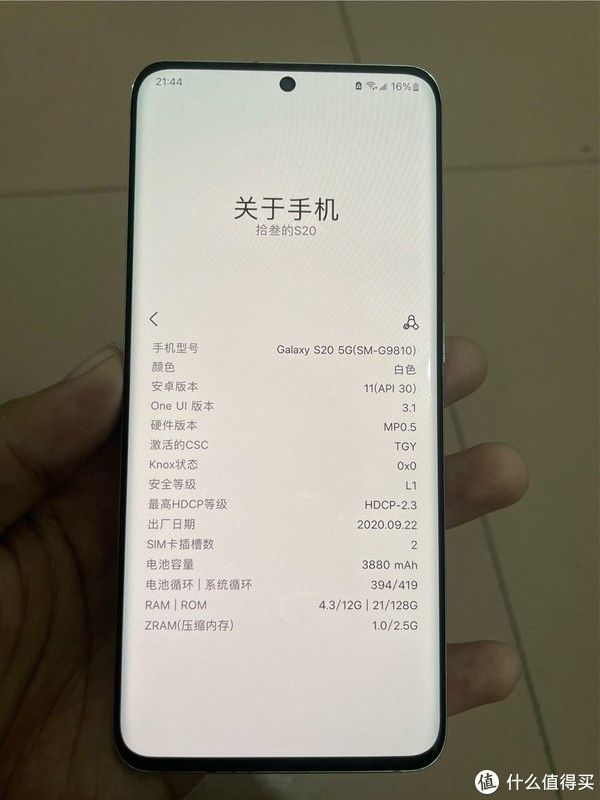springboot|springboot 使用ThreadLocal的实例代码
目录
- springboot 使用ThreadLocal
- ThreadLocal在springboot使用中的坑
springboot 使用ThreadLocal 本文参考慕课教程给出一个在spring boot中使用ThreadLocal实现线程封闭的实例。
首先创建一个包含ThreadLocal成员变量的实例:
public class RequestHolder { private final static ThreadLocalrequestHolder = new ThreadLocal<>(); public static void add(Long id) {requestHolder.set(id); } public static Long getId() {return requestHolder.get(); } public static void remove() {requestHolder.remove(); }}
编写一个Controller类,请求该类的test()方法获取ThreadLocal中存储的id:
import org.springframework.stereotype.Controller; import org.springframework.web.bind.annotation.RequestMapping; import org.springframework.web.bind.annotation.ResponseBody; @Controller@RequestMapping("/threadLocal")public class ThreadLocalController { @RequestMapping("/test")@ResponseBodypublic Long test() {return RequestHolder.getId(); }}
编写过滤器,在请求到达Servlet之前(请求->tomcat容器->filter->servlet->inteceptor->controller),将当前线程的id添加到ThreadLocal中:
import com.mmall.concurrency.example.threadLocal.RequestHolder; import lombok.extern.slf4j.Slf4j; import javax.servlet.Filter; import javax.servlet.FilterChain; import javax.servlet.FilterConfig; import javax.servlet.ServletException; import javax.servlet.ServletRequest; import javax.servlet.ServletResponse; import javax.servlet.http.HttpServletRequest; import java.io.IOException; @Slf4jpublic class HttpFilter implements Filter { @Overridepublic void init(FilterConfig filterConfig) throws ServletException { }@Overridepublic void doFilter(ServletRequest servletRequest, ServletResponse servletResponse, FilterChain filterChain) throws IOException, ServletException {HttpServletRequest request = (HttpServletRequest) servletRequest; log.info("do filter, {}, {}", Thread.currentThread().getId(), request.getServletPath()); //在ThreadLocal中添加当前线程的idRequestHolder.add(Thread.currentThread().getId()); filterChain.doFilter(servletRequest, servletResponse); } @Overridepublic void destroy() { }}
编写拦截器,当请求处理完成后(从Controller返回后),清除ThreadLocal中的id,避免内存泄漏。
import com.mmall.concurrency.example.threadLocal.RequestHolder; import lombok.extern.slf4j.Slf4j; import org.springframework.web.servlet.handler.HandlerInterceptorAdapter; import javax.servlet.http.HttpServletRequest; import javax.servlet.http.HttpServletResponse; @Slf4jpublic class HttpInterceptor extends HandlerInterceptorAdapter { @Overridepublic boolean preHandle(HttpServletRequest request, HttpServletResponse response, Object handler) throws Exception {log.info("preHandle"); return true; } @Overridepublic void afterCompletion(HttpServletRequest request, HttpServletResponse response, Object handler, Exception ex) throws Exception {log.info("ThreadId:"+RequestHolder.getId()); RequestHolder.remove(); log.info("afterCompletion"); return; }}
最后,我们需要在spring boot启动类上注册我们定义的Filer及Inteceptor,并设置拦截路径。
import org.springframework.boot.SpringApplication; import org.springframework.boot.autoconfigure.SpringBootApplication; import org.springframework.boot.web.servlet.FilterRegistrationBean; import org.springframework.context.annotation.Bean; import org.springframework.web.servlet.config.annotation.InterceptorRegistry; import org.springframework.web.servlet.config.annotation.WebMvcConfigurerAdapter; @SpringBootApplicationpublic class ConcurrencyApplication extends WebMvcConfigurerAdapter{ public static void main(String[] args) {SpringApplication.run(ConcurrencyApplication.class, args); } @Bean public FilterRegistrationBean httpFilter() {FilterRegistrationBean registrationBean = new FilterRegistrationBean(); registrationBean.setFilter(new HttpFilter()); registrationBean.addUrlPatterns("/threadLocal/*"); return registrationBean; } @Override public void addInterceptors(InterceptorRegistry registry) {registry.addInterceptor(new HttpInterceptor()).addPathPatterns("/**"); }}
在浏览器或者postman中输入http://localhost:8080/threadLocal/test
观察输出结果:
2018-11-09 11:16:51.287INFO 34076 --- [main] s.b.c.e.t.TomcatEmbeddedServletContainer : Tomcat started on port(s): 8080 (http)从打印的日志结果中,我们看到在Filter中我们将当前线程的id 29添加到了ThreadLocal中,随后在Inteceptor中打印并删除了id。
2018-11-09 11:16:51.290INFO 34076 --- [main] c.m.concurrency.ConcurrencyApplication: Started ConcurrencyApplication in 1.718 seconds (JVM running for 2.132)
2018-11-09 11:17:03.060INFO 34076 --- [nio-8080-exec-2] o.a.c.c.C.[Tomcat].[localhost].[/]: Initializing Spring FrameworkServlet 'dispatcherServlet'
2018-11-09 11:17:03.060INFO 34076 --- [nio-8080-exec-2] o.s.web.servlet.DispatcherServlet: FrameworkServlet 'dispatcherServlet': initialization started
2018-11-09 11:17:03.072INFO 34076 --- [nio-8080-exec-2] o.s.web.servlet.DispatcherServlet: FrameworkServlet 'dispatcherServlet': initialization completed in 12 ms
2018-11-09 11:17:03.078INFO 34076 --- [nio-8080-exec-2] com.mmall.concurrency.HttpFilter: do filter, 29, /threadLocal/test
2018-11-09 11:17:03.090INFO 34076 --- [nio-8080-exec-2] com.mmall.concurrency.HttpInterceptor: preHandle
2018-11-09 11:17:03.124INFO 34076 --- [nio-8080-exec-2] com.mmall.concurrency.HttpInterceptor: ThreadId:29
2018-11-09 11:17:03.124INFO 34076 --- [nio-8080-exec-2] com.mmall.concurrency.HttpInterceptor: afterCompletion
ThreadLocal在springboot使用中的坑 【springboot|springboot 使用ThreadLocal的实例代码】ThreadLocal 适用于变量在线程间隔离,而在方法或类间共享的场景。现在在Springboot中我做如下场景的使用:
使用 Spring Boot 创建一个 Web 应用程序,使用 ThreadLocal 存放一个 Integer 的值,来暂且代表需要在线程中保存的用户信息,这个值初始是 null。在业务逻辑中,我先从 ThreadLocal 获取一次值,然后把外部传入的参数设置到 ThreadLocal 中,来模拟从当前上下文获取到用户信息的逻辑,随后再获取一次值,最后输出两次获得的值和线程名称。
@RestControllerpublic class threadLocal {private ThreadLocalcurrentUser = ThreadLocal.withInitial(() -> null); @RequestMapping("wrong")public Map wrong(@RequestParam("userId") Integer userId) {//设置用户信息之前先查询一次ThreadLocal中的用户信息String before = Thread.currentThread().getName() + ":" + currentUser.get(); //设置用户信息到ThreadLocalcurrentUser.set(userId); //设置用户信息之后再查询一次ThreadLocal中的用户信息String after = Thread.currentThread().getName() + ":" + currentUser.get(); //汇总输出两次查询结果Map result = new HashMap(); result.put("before", before); result.put("after", after); return result; }}
为了让问题快速的重现,我在配置文件中设置一下 Tomcat 的参数,把工作线程池最大线程数设置为 1,这样始终是同一个线程在处理请求:
server.tomcat.max-threads=1
运行程序后先让用户 1 来请求接口,可以看到第一和第二次获取到用户 ID 分别是 null 和 1,符合预期:随后用户 2 来请求接口,这次就出现了 Bug,第一和第二次获取到用户 ID 分别是 1 和 2,显然第一次获取到了用户 1 的信息,原因就是 Tomcat 的线程池重用了线程。

文章图片
在 Tomcat 这种 Web 服务器下跑的业务代码,本来就运行在一个多线程环境中,并不能认为没有显式开启多线程就不会有线程安全问题,所以使用类似 ThreadLocal 工具来存放一些数据时,需要特别注意在代码运行完后,显式地去清空设置的数据。如果在代码中使用了自定义的线程池,也同样会遇到这个问题。修改后代码如下:
@RestControllerpublic class threadLocal {private ThreadLocalcurrentUser = ThreadLocal.withInitial(() -> null); @RequestMapping("wrong")public Map wrong(@RequestParam("userId") Integer userId) {//设置用户信息之前先查询一次ThreadLocal中的用户信息String before = Thread.currentThread().getName() + ":" + currentUser.get(); //设置用户信息到ThreadLocalcurrentUser.set(userId); try {//设置用户信息之后再查询一次ThreadLocal中的用户信息String after = Thread.currentThread().getName() + ":" + currentUser.get(); //汇总输出两次查询结果Map result = new HashMap(); result.put("before", before); result.put("after", after); return result; } finally {//增加移除处理currentUser.remove(); }}}
以上为个人经验,希望能给大家一个参考,也希望大家多多支持脚本之家。
推荐阅读
- 由浅入深理解AOP
- 【译】20个更有效地使用谷歌搜索的技巧
- Activiti(一)SpringBoot2集成Activiti6
- mybatisplus如何在xml的连表查询中使用queryWrapper
- MybatisPlus|MybatisPlus LambdaQueryWrapper使用int默认值的坑及解决
- MybatisPlus使用queryWrapper如何实现复杂查询
- SpringBoot调用公共模块的自定义注解失效的解决
- 解决SpringBoot引用别的模块无法注入的问题
- iOS中的Block
- Linux下面如何查看tomcat已经使用多少线程









